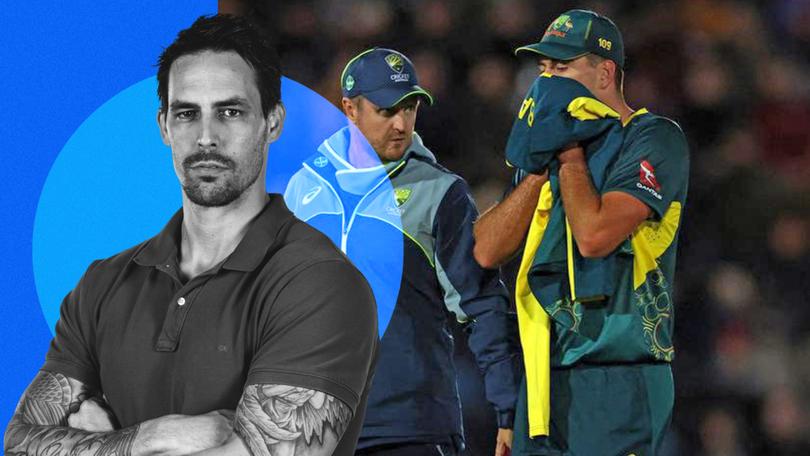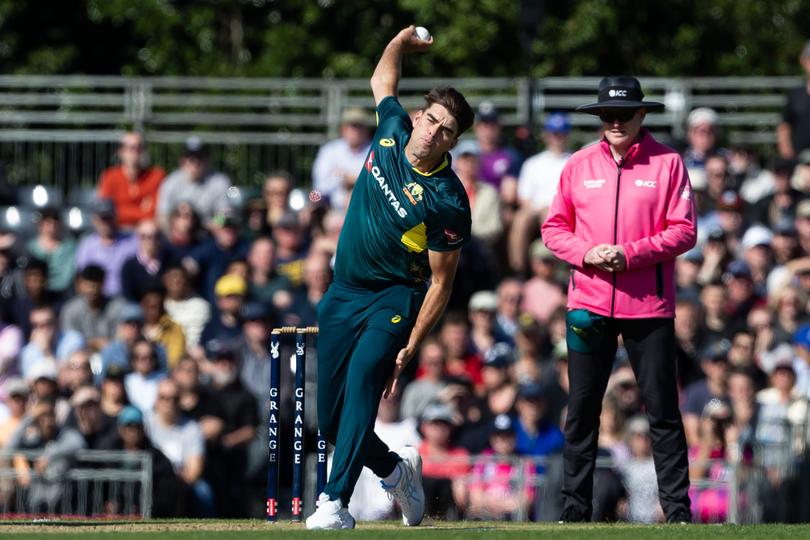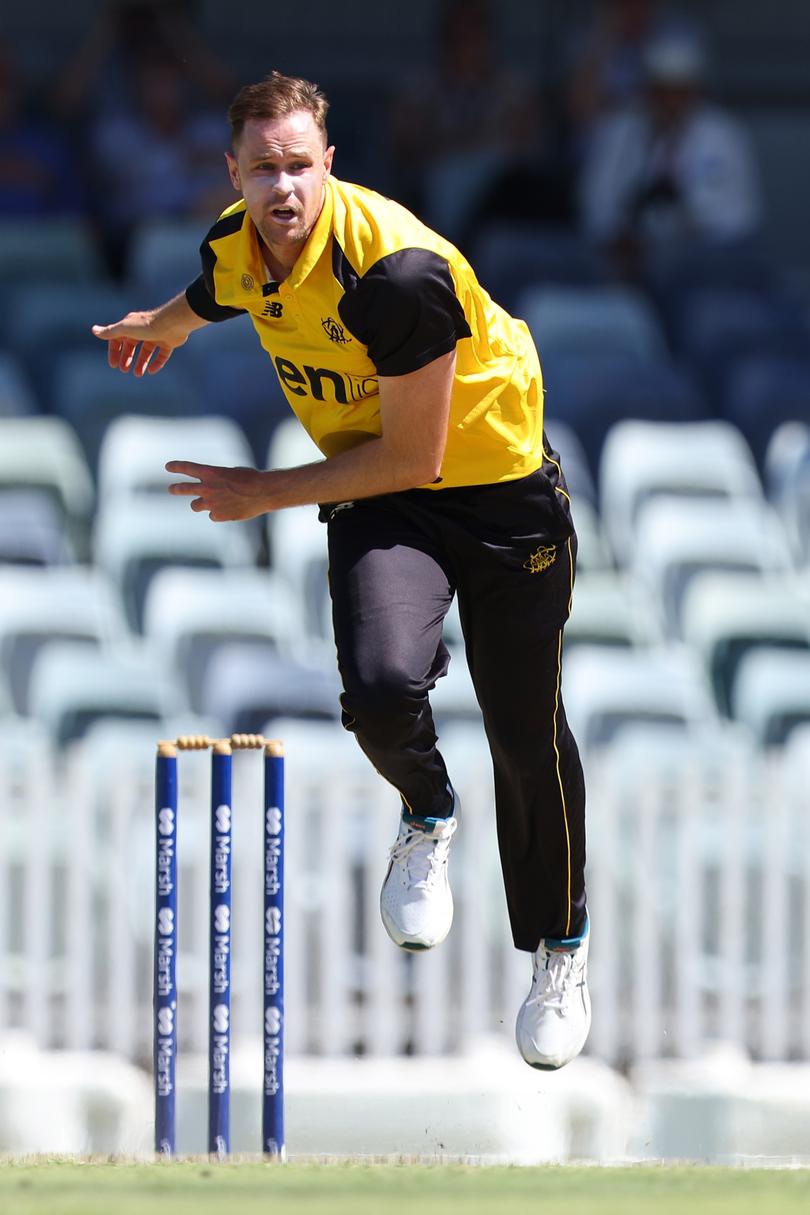MITCHELL JOHNSON: Popularity of T20 cricket will leave future fast bowlers needing to choose a speciality

Just bowl 24 balls. Sounds easy, doesn’t it?
But as the injuries to Australia’s quicks stack up – with Xavier Bartlett’s side strain in the Twenty20 series against England this week the latest of them – it has got me thinking. Is T20 cricket good or bad for a bowler’s body?
Getting your body bowling fit has traditionally been about repetition and rhythm. Reproducing line and length. Maintaining energy through a long spell and then coming back the next session and doing it again.
Sign up to The Nightly's newsletters.
Get the first look at the digital newspaper, curated daily stories and breaking headlines delivered to your inbox.
By continuing you agree to our Terms and Privacy Policy.T20 cricket puts different strains on the body. You are rarely bowling the same ball twice. You’re varying your pace and bowling cutters and slower balls.
Changing what you are going to bowl at the last split second in response to the batsman’s movement across the crease.
Asking your body to produce unnatural deliveries such as the slower-ball bouncer.
You might come on and bowl only one over early, then cool off and bowl another over or two mid-innings and then another one at the end.
Test cricket is strenuous on the body, no doubt and bowlers prepare for it.

While T20 bowlers also prepare for bowling their four overs, I honestly find it intriguing and wonder if T20 bowlers are actually the ones putting their bodies under more strain.
I’d be interested in any research on the forms of cricket bowlers are playing before their body breaks down. I know players are monitored these days so I’m sure the data is there.
There is a large number of Australian fast bowlers either injured or coming back from injury at the moment.
And the Australian summer of cricket hasn’t even started. Bartlett joins a list including Spencer Johnson, Riley Meredith, Nathan Ellis, Will Sutherland, Daniel Sams, Jhye Richardson, Lance Morris and Scott Boland.
Now, more than ever, the next generation of Australian fast bowlers will have to choose to preference either red-ball or white-ball cricket.
And that’s not just about the total workload, but the different physical requirements involved.
Australia’s big three of Cummins, Starc and Josh Hazlewood have long been the first-choice attack in all forms, but that’s probably not the norm around the world. And even they have sat out certain series, as we’ve seen in Scotland and England, as part of the juggle.
Going forward, while bowlers may not say it openly, for their own longevity, they will have to start playing it smarter and choosing formats.
Western Australia’s double three-peat in the Sheffield Shield and one-day competitions has been achieved with largely different attacks.
In last summer’s one-day final against NSW, it was a pace trio of Jason Behrendorff, Joel Paris and Andrew Tye complemented by spinners Ashton Agar and Cooper Connolly.
In the shield final against Tasmania, it was pacemen Paris, Cameron Gannon and Charlie Stobo, with all-rounder Aaron Hardie and spinner Corey Rocchiccioli.
While he had to give up on his dream of a baggy green, Behrendorff made a smart choice years ago to become a white-ball specialist because his back just wasn’t coping with four-day cricket.
His career was genuinely under threat, but now he’s still going strong at 34, having played lots of white-ball international cricket and been a key part of the success of WA’s one-day team as well as Perth Scorchers.
Bartlett’s setback, which came after Ellis had to leave the tour with a hamstring injury, is a real shame because I’ve liked what I’ve seen from him so far.
This is the nature of professional sports. Injuries happen when you don’t want them to happen.
There could be a few reasons why Bartlett did his side but one thing I know is that when playing international cricket for your country, there is a big step up when it comes to many things.

There are different playing and training intensities, and the game intensity lifts as well. You are travelling more and there’s more media attention. More of everything.
I felt it took a good 12 months of consistently playing international cricket to get a good feel of how it all worked with the travel, training, meetings, the intensity lift and just being intensely watched and judged as you try to make your way.
While it will be disappointing for Bartlett, he is not the first or last to go through this. These are the moments that matter, though. It’s the old saying, “when you fall off the horse, get back on”.
For Bartlett, this will be a test of character. How much does he want to get back to playing for his country again? No one likes getting injured, especially when you have been playing well and when the opportunities are limited because of the strength of the Aussie bowling attack.
Bartlett seems to me like a guy who will be gutted but will bounce back. Someone who has had a taste of what it’s like at the top and can use this injury break to get himself right again.
Enforced time on the sidelines can be a good time to take a breath and reflect.
Sometimes, cricket just keeps rolling on, and one series rolls into another. You don’t sit back and appreciate the opportunity you have.
